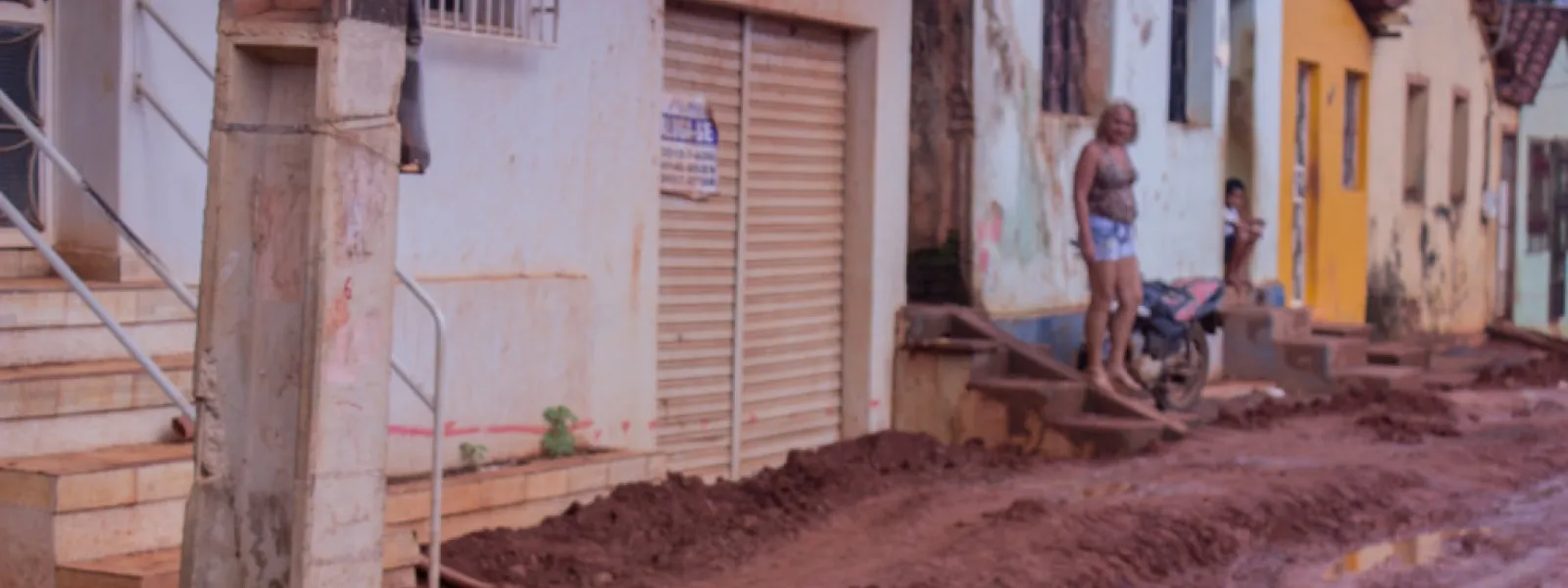
Project
Photo: Maíra Irigaray / Amazon WatchHolding Brazil accountable for the Belo Monte Dam
When fully operational, Belo Monte will be the third-largest dam in the world, constructed in one of the most important ecosystems on the planet: the Amazon rainforest. It sits on the Xingu River in Pará, a state in northern Brazil. The reservoir will cover 500 square kilometers of forest and farmland—an area the size of Chicago.
For the people of the Xingu, construction of Belo Monte has meant loss of access to water, food, housing, work and transportation. At least 20,000 people have been displaced.
The government and construction consortium began to construct the dam without first consulting the people of the region, many of whom are indigenous. They flouted international human rights law, which requires the free, prior and informed consent of affected indigenous communities. Brazil also failed to comply with precautionary measures issued by the Inter-American Human Rights Commission, which were intended to protect the life, health, and integrity of local communities.
Though Belo Monte began operations in May 2016, it is not yet operating at full capacity. In April 2016, a federal court suspended the dam's operating license because the consortium in charge did not complete basic sanitation works in Altamira, the city nearest to and most affected by the dam.
Partners:
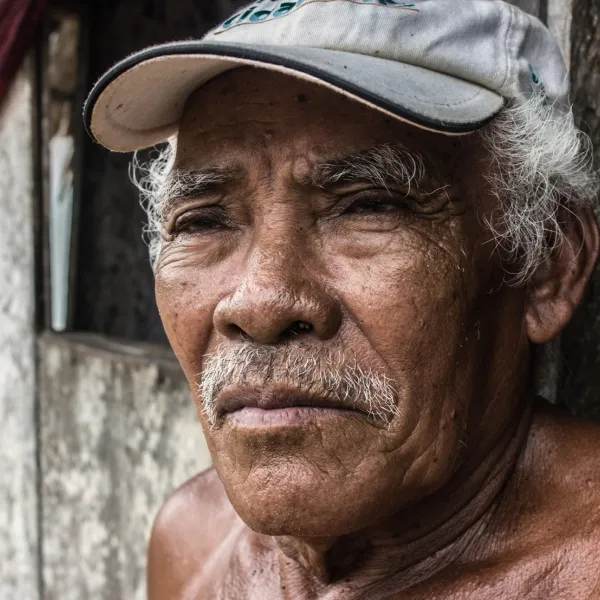
Related projects
Latest News
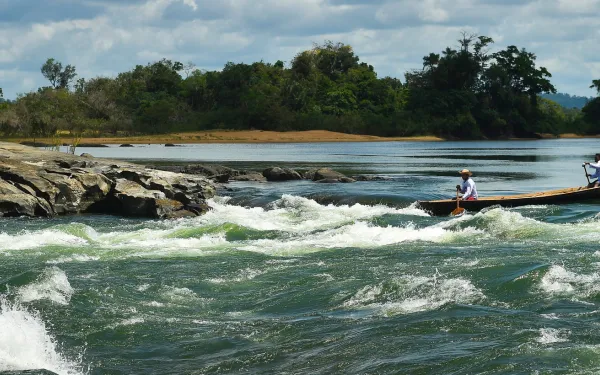
Expert report: proposed gold mine in Brazilian Amazon presents unacceptable risk
Altamira, Brazil. An expert study released today reveals serious deficiencies in the environmental impact assessment submitted to Brazilian authorities by Canadian mining company Belo Sun. The analysis exposes an unacceptable degree of risk that the tailings dam at the proposed Volta Grande gold mine will fail, contaminating the Xingu River and harming nearby indigenous and other communities. The report’s author, Dr. Steven Emerman, explains that despite the presence of geological faults at the mine site, the company has not produced any seismicity studies. Nor has the dam been designed with seismic safety in mind, in violation of Brazilian tailings dam regulations. Dr. Emerman also raises concern about the company’s use of its tailings reservoir to capture water. Industry best practice is to prevent the flow of surface runoff into tailings ponds in order to minimize the risk of dam failure. Moreover, the report reveals that Belo Sun has provided contradictory information regarding its tailings storage plan to investors and Brazilian regulatory authorities. Dr. Emerman recommends that the project’s licence be revoked. Brazilian courts suspended Belo Sun’s installation licence in 2017 because the company failed to study the project’s impact on indigenous and other traditional communities, or to consult these populations. Belo Sun has been criticized for publishing misleading statements to bolster sagging interest in the project among potential investors, amidst growing evidence of social, environmental, financial and reputational risks. Last week local movements Rede Xingu+ and Xingo Vivo para Sempre submitted Dr. Emerman’s report to government agencies responsible for project licensing. These organizations demand that additional studies be undertaken, which they argue are “indispensable to assess the social and environmental viability of Belo Sun’s mining project considering the grave risk to indigenous and other river-dwelling communities located next to the project and its tailings dam.” FAILURES, INSECURITY AND CONFLICTING INFORMATION From conflicting information to the absence of seismic safety criteria, Dr. Emerman's opinion highlights eight main points that support the recommendation to reject the Volta Grande project: The tailings dam was not designed under any seismic safety criteria, violating Brazilian regulations in this regard. Any tailings dam should be designed to withstand events such as floods and earthquakes. Contrary to the Brazilian standard, the company did not include in its studies an analysis of local seismicity nor did it simulate the response of the structure to a hypothetical seismic acceleration. Although geological faults have been mapped at the tailings dam site, no local seismicity studies have been done, which also violates Brazilian tailings dam regulations. Seismic activity is responsible for causing the dissolution of saturated debris into water, one of the most common causes of tailings dam failures. In Brazil, in 2019 alone, there were three dam failures, including the rupture of the Vale dam in Brumadinho (Minas Gerais), which caused at least 250 deaths. Cases like these demonstrate the need for and importance of local seismicity studies and are indispensable for the proper assessment of the risk of failure of a tailings dam. No risk analysis has been made of the geological faults mapped in the vicinity of the project site. Three of these faults, which are structures present in rocks and which can promote seismic movements, intersect at the exact site of the proposed tailings dam. The official simulation of the rupture assumes, without justification, that the flow of the waste would be interrupted when it reaches the Xingu River, ignoring the capacity of the toxic elements to travel tens of kilometers along the Volta Grande. The conclusions of the EIA also support the hypothesis that the tailings flow would take 97 minutes to reach the Xingu, but without mentioning the details of the calculation used. According to the modelling presented in the opinion, considering the volume of tailings stored on the order of 35 million cubic metres and assuming a spill of approximately 25%, under a conservative scenario the flood would cover an initial distance of up to 41 kilometres along the river. At a speed of 20 km/h, the flooding of Belo Sun's dam would reach the Xingu in only seven minutes, covering the distance of 41 km in only two hours, reaching the Volta Grande Indigenous Land. After the rupture of the Vale Dam in Brumadinho, the tailings flow reached 120 km/hr, 100 km/hr more than the more conservative scenario proposed in the report. In the worst case, with the release of 100% of the stored tailings, the initial flow would cover 98 kilometers along the Xingu River and could reach the Amazon River and the Atlantic Ocean. There is a high risk of toxic water spillage into the Xingu. The project provides for the recycling of cyanide leachate, a substance used to separate gold, which can result in waste water that is highly enriched with toxic elements such as arsenic and mercury. The result, whose analysis is absent from official documents, could be the spillage of a waste-water mixture that is highly toxic to aquatic organisms into the Xingu River in the event of a dam failure or spill. There is no plan in the EIA to close the mine or tailings dam, a key issue for the social and environmental viability of the mining project. The document contains a promise by the business group to find out, after the event, how to permanently stabilize the tailings dam. The waste storage system adopted at the time is not viable and runs counter to good mining practice. Part of the solution to reduce the probability of tailings dam failure is to reduce the water content in the tailings tank. But the Belo Sun project envisages that all the waste will be saturated and under seven metres of free water, above the surface of the solid waste. Aware of the issue raised in the previous point, the company seems to have decided that the current plan to flood the waste is not feasible. The Chief Executive Officer of Belo Sun Mining stated o MiningWatch Canada that he would abandon the current plan for a filtered tailings storage facility, which should have a significantly lower water content. However, the company provided conflicting information to Brazilian organizations and regulatory authorities: in a presentation to FUNAI in October 2019, the company described the same wet waste storage plan as the EIA. "The provision of contradictory information to different audiences by Belo Sun Mining and its Brazilian subsidiary is very serious in terms of the reliability of the information provided in the administrative processes," the opinion reiterates. Rede Xingu+ is an articulation of indigenous, riverine and partner organizations that work in the Xingu River basin. Movimento Xingu Vivo para Sempre is a collective formed in 2008 by local, national and international civil society organizations; threatened indigenous and non-indigenous communities; and social, human rights and environmental movements that oppose the construction of hydroelectric dams on the Xingu River and that fight in defence of the rights of local people. Contacts Dr. Steven Emerman, Malach Consulting, +1-801-921-1228 (Utah, USA) Brent Milikan, Amazon Program Director, International Rivers, +55-61-98153-7009 (Brasilia, Brazil). Mr. Milikan can connect journalists to representatives of Rede Xingu+ and Movimento Xingu Vivo para Sempre. Karyn Keenan, Director, Above Ground, +1-613-791-7532 (Ottawa, Canada)
Read more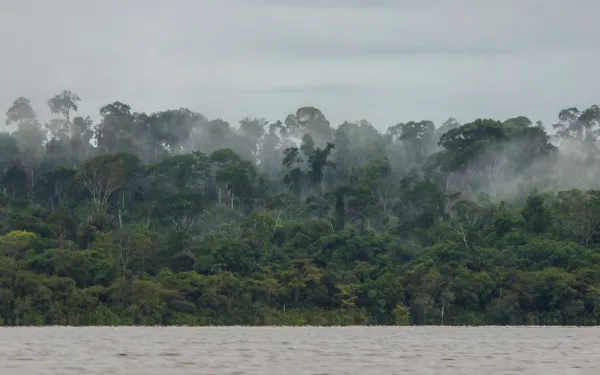
Applauding the exclusion of Eletrobras from Norwegian oil fund
The Council on Ethics, which governs the world's largest sovereign wealth fund, recommended the exclusion due to the participation of the Brazilian state-owned company in the Belo Monte hydroelectric project, which is associated with serious human rights violations against indigenous peoples. On May 13, the Norwegian oil fund, considered the world's largest sovereign wealth fund, excluded twelve companies from its investment portfolio for ethical reasons, including Brazil's Eletrobras for its participation in the Belo Monte hydroelectric project. The fund is managed by the public bank Norges Bank Investment Management, which follows the recommendations made each year by the Ethics Council to ensure that investments meet certain criteria. The Council noted that the Belo Monte project, run by the Norte Energia consortium - of which Eletrobras is a part - caused "greater pressure on indigenous lands, the disintegration of the social structures of indigenous peoples and the deterioration of their ways of life" with the forced displacement of some 20,000 people. AIDA - as part of a joint civil society effort - informed the Council of the situation of the indigenous and riverine populations affected by the project, its social and environmental impacts, the operational situation of the dam, and the current status of national and international legal actions brought against the project. We believe the Council's decision should be applauded because it discourages the continuation of unsustainable and ill-named development projects that threaten the survival of indigenous and traditional peoples, as is the case with Belo Monte. It is essential that banks, international financial institutions and monetary funds take into account the likely impacts of the projects they finance. Supporting socially and environmentally sustainable projects instead of initiatives that prioritize economic benefit over the protection of human rights and the environment demonstrates responsible and ethical investment. PRESS CONTACT Victor Quintanilla, [email protected], +5215570522107
Read more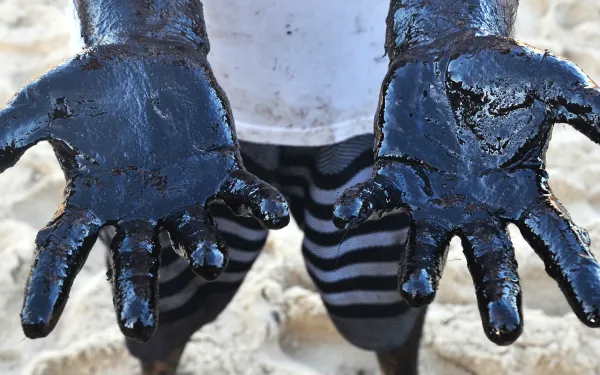
The oil spill devouring life on Brazil’s beaches
Photos: Marcela Cintra / Text: Laura Yaniz Since late August, oil has been registered at more than 500 points along 2,500 kilometers of coastline in northeastern Brazil. What began with the appearance of small black spots on some beaches quickly became huge stains that changed the color of the sand itself. The spill’s origin remains unknown, as local organizations and communities organize to clean up their beaches. Far from being resolved, the problem is getting worse every day. The oil’s advance is threatening the marine life in mangroves and coral reefs, both key ecosystems for the survival of species. In addition, residents of the affected communities, who depend on tourism and fishing, have seen their lifestyles and economies threatened. Their health is also at risk due to the consumption of contaminated seafood and direct exposure to the spill. Faced with the inaction of government authorities, the people have been cleaning the beaches and sea with their own hands. The spill itself, coupled with state neglect, violates the human rights of the inhabitants of the hundreds of affected beaches. AIDA—together with the Projeto Publico Institute, Salve Maracaipe, Projeto Caribessa and Rede Minha Jampa—denounced these violations before the Inter-American Commission on Human Rights in an effort to urge the Brazilian government to respond to this social and environmental crisis. Soledad García Muñoz, the Commission's Special Rapporteur on Economic, Social, Cultural and Environmental Rights expressed her solidarity with the Brazilian people and authorities in the face of the tragedy and called on the State to "take the necessary measures to avoid a bigger deterioration of the affected ecosystems, considering that the time, the resources and the way of acting focused on human rights are the key factors for the effectiveness of a contingency plan that the present situation deserves.” She added: “the slower and partial are the measures adopted, more irreparable will be the damages for the Brazilian coast and its biodiversity, as well as for the quality of life of the people that live in these affected regions. It is necessary an urgent and sensible response in face of these serious events generated by the contamination, because that could also accelerate the effects of the climate change in the coast, mangroves, swamps and other ecologically vulnerable habitats.”
Read more